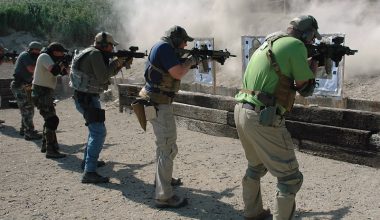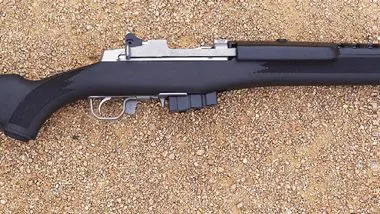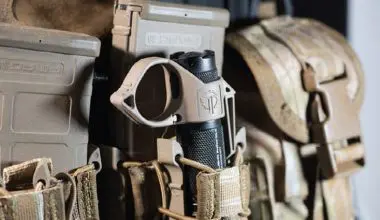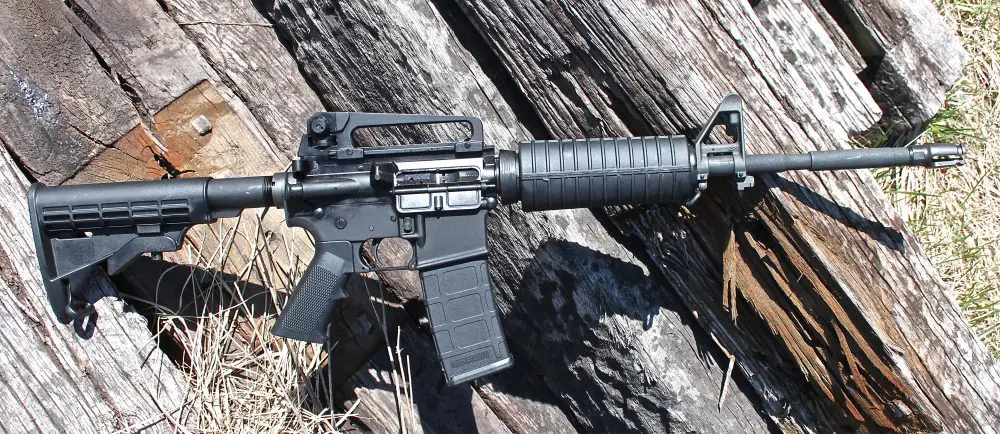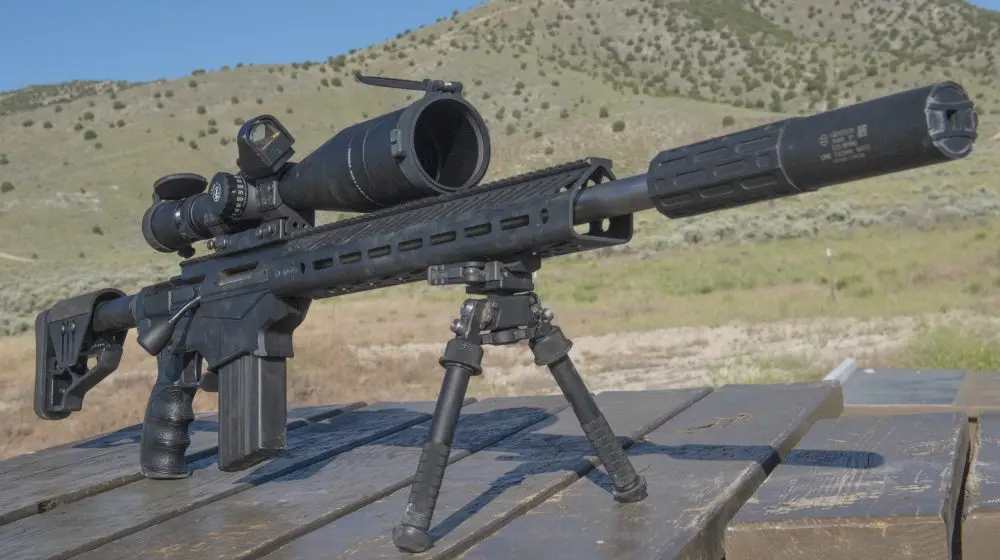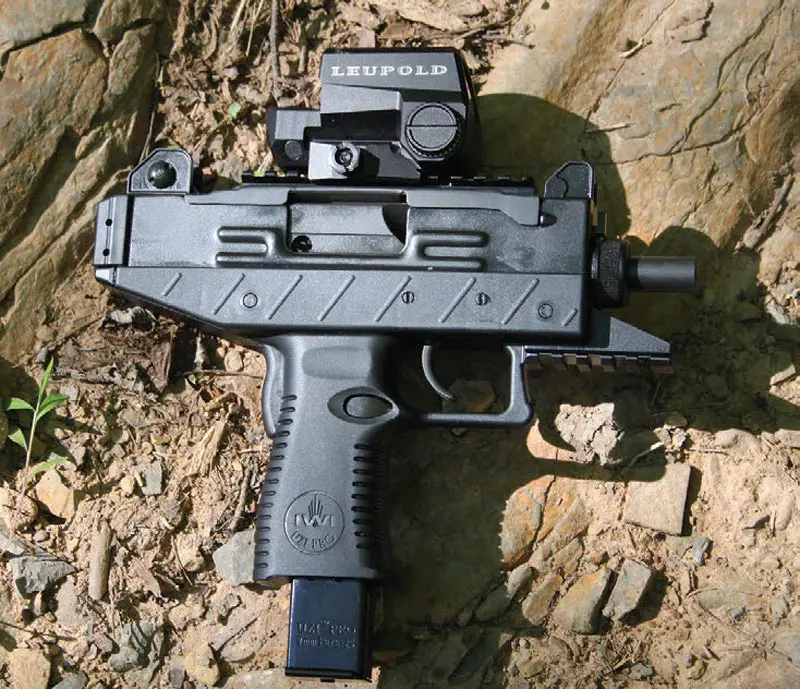
IT is a safe bet that some inexorable force has drawn everyone reading this magazine into considering buying a weapon that made no sense when one’s “needs” were analyzed empirically. A muchanticipated entry along these lines is from IWI US in the form of the Uzi Pro Pistol. The Uzi Pro is patterned after the iconic Uzi originally designed by Uziel Gal in the late 1940s.
IWI US is leading the resurgence of Israeli weaponry in the U.S., with the Tavor and Galil platforms also in their product stable.
Unfortunately, there are some weapons that most of us will not be able to experience or handle in their original form. This is especially true of select-fire rifles and submachine guns. Without getting into the reasons right or wrong, this is just the way it is due to different laws and regulations.
As with most members of the gun culture, I have always been interested in weaponry. I remember being fascinated by images of various entities—both “good” and “bad”—carrying a small, yet lethal, submachine gun that is instantly identifiable even by firearm novices—the Uzi.
Uziel Gal started designing the Uzi in 1948, and the prototype was finished in 1950. Elite Israeli units began using the Uzi in 1954, with general issue to other IDF units in 1956, including officers, rear echelon troops, artillery, tank, and elite light infantry assault units.
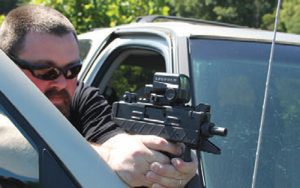
Gal designed the Uzi around a telescopic bolt. The bolt travels over and around the barrel during operation. This allows for a more compact weapon via the barrel being moved back into the receiver and the magazine well typically placed in the handgrip. The concept was first seen on early Czech designs such as the ZK 476 and vz23.
Table of Contents
SIMPLE TO MANUFACTURE, OPERATE AND MAINTAIN
The Uzi is simple and economical to manufacture, taking full advantage of stampings and plastics to create receiver, cover, trigger housing, and folding metal stock. Only the bolt and barrel require machining. This was an important aspect for the fledgling Israeli nation fighting for its existence.
A centrally located handle on top of the receiver, making it ambidextrous, operates the bolt. The square-shaped bolt reciprocates in the sheet-metal trough formed within the receiver. The top cover seals off the bolt pathway to minimize exposure to the elements.
Tolerances are relatively loose for better reliability, with grooves incorporated on both sides of the receiver to increase reliability in dirty environments. Any accumulated debris is given a path out of the way of the bolt.
Two of the Uzi’s greatest qualities are its simple operation and maintenance. User friendliness was a high priority for a citizen army like the IDF. Field-stripping procedures typify this simplicity, with no tools required. After double-checking the weapon is empty, unscrew the barrel nut and remove the barrel, then remove the top cover to let the bolt and striker assembly lift out of the receiver. That’s it. The Uzi is now field stripped for easy cleaning.
With a 9mm stemming from an SMG design, many initially want a short-barreled rifle (SBR). But they might not like the paperwork and cost for an SBR or may live in jurisdictions that disallow such weapons. The Uzi Pro takes a different path by arriving in pistol form.
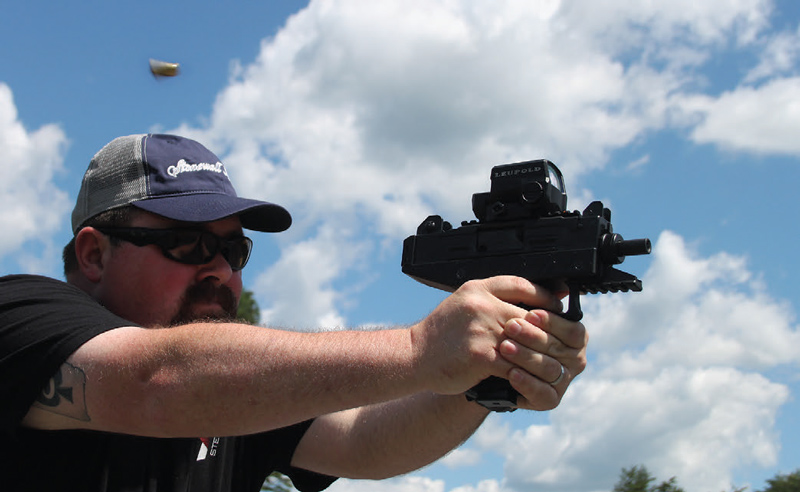
UZI PRO PISTOL
IWI US has modified the Uzi Pro pistol to fire from a closed bolt versus the open-bolt design of the original select-fire model. The original Uzi is considered a premier example of a 3rd Generation SMG utilizing the blowback method of operation. Cartridge pressure is used to overcome the bolt’s mass, pushing it to the rear, and action springs return it into battery, stripping a fresh round from the magazine to operate the weapon.
The IWI US Uzi Pro uses a floating firing pin as opposed to the fixed firing pin found in the select-fire version. Other changes to the semi-automatic Uzi Pro include the receiver not allowing for the drop-in installation of an SMG fixed firing pin. In conjunction with this, the firing pin of the semi-auto-only Uzi Pro is incorporated into the bolt group. The semi-auto bolt group features a different extractor design versus the SMG version.
The fire-control assembly is modified with the semi-auto version as well, since three positions are not necessary as with a select-fire version. The sear on the semi-auto Uzi Pro is smaller, because it is not under the same stress as the SMG version. Top covers are different between the semi-auto Uzi Pro and SMG version.
Lastly, barrel installation methods are different between the semi-auto Uzi Pro and the select-fire versions. Typically, original Uzi barrels will not work with semi-auto weapons due to differences in welding patterns associated with the front trunnion.
The Uzi Pro is similar in size to the Micro Uzi, minus wire stock and select-fire capability. The telescopic bolt design aids in minimizing the effect of length. Overall length of the Uzi Pro is 9.5 inches, with a 4.5-inch barrel featuring a 1:10 twist. This twist rate allows the user to utilize the full range of 9mm loads, including 147-grain bullets.
IWI US incorporates advanced polymers in the lower section of the Uzi Pro’s receiver, resulting in lighter weight and relocation of the magazine release to a more practical and traditional pistol-based location. The Uzi Pro features a manual thumb safety along with the typical Uzi grip safety that must be fully depressed before cocking or firing the pistol.
The Uzi Pro weighs in at 3.6 pounds empty. Unlike the original Uzi models, the Uzi Pro has the charging handle moved from the top of the pistol to the left side of the receiver. This permits the addition of a full-length Picatinny rail to the top of the pistol, and the use of any optical device that utilizes a Picatinny rail clamp mount.
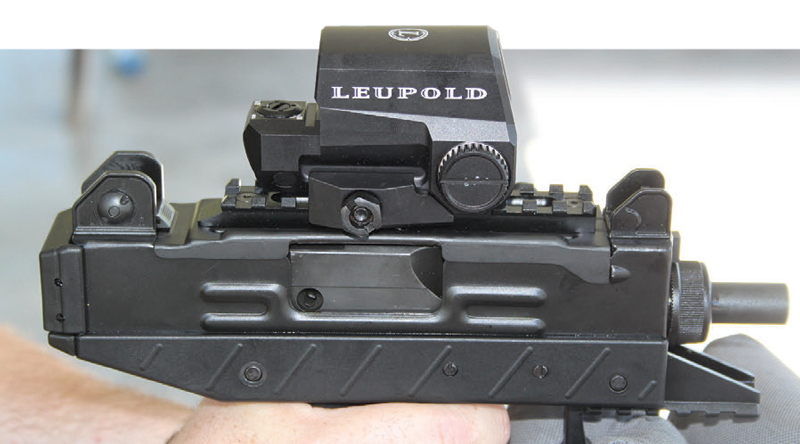
OPTICS
The original Uzi was designed before red dot optics were commonly used. A red dot offers a definite advantage over the adjustable iron sights that arrive on the Uzi Pro. An additional Picatinny rail is incorporated in the polymer lower. Lights and/or lasers can be mounted directly under the barrel.
Each UZI Pro pistol is supplied with two steel magazines: one 20 round and one 25 round. IWI US plans on offering a 32-round version as well. While resembling a typical Uzi magazine, the release notch on the Uzi Pro magazine is different and prevents use of the older magazines. Magazines drop free when the magazine release is depressed.
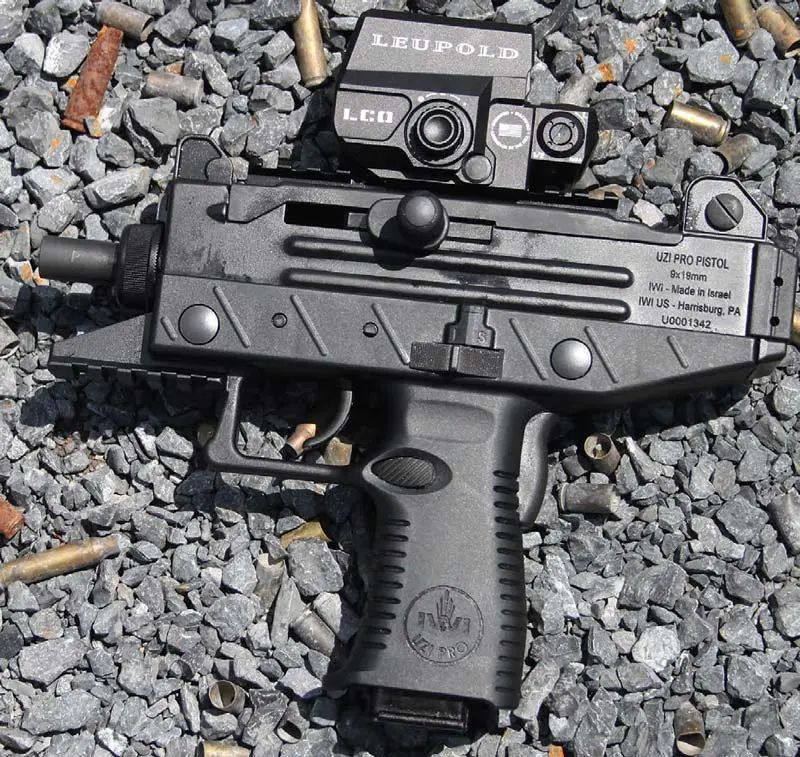
One aspect of the Uzi Pro I was looking forward to was the chance to utilize the new Leupold Carbine Optic (LCO) red dot. The LCO’s one-MOA Dot reticle has 16 brightness settings to let you find the exact intensity you need in any conditions. At its highest setting, the dot will shine bright in the middle of the day. It is night-vision compatible on lower settings. The manual push-button on/off switch with integrated brightness control puts all the power at your fingertips.
The LCO has a battery life of up to five years using a common CR123 lithium battery, and it weighs 9.5 ounces. The LCO view makes it ideal for use not only on a rifle, but also on a pistol such as the Uzi Pro. The LCO’s housing disappears and the dot just “floats” superimposed over the target.
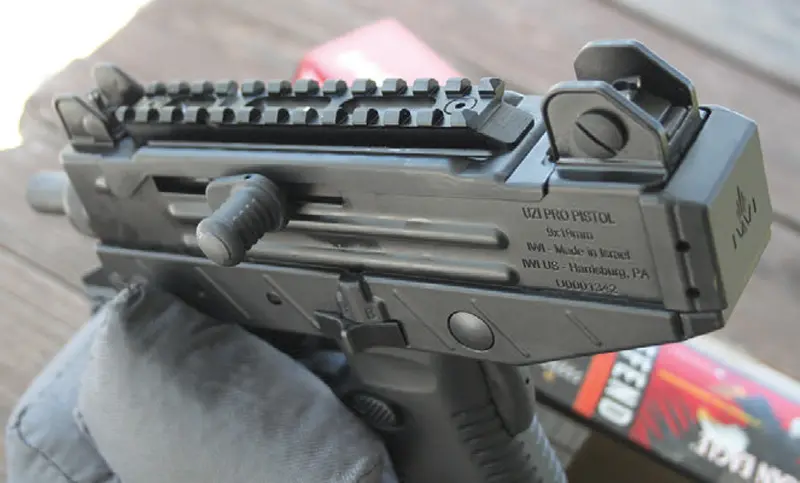
MANIPULATION
The Uzi Pro’s non-discriminatory handling of several types of 9mm ammunition was a pleasant surprise. I purchased Winchester 9mm NATO loads based on experience with other 9mm SMG designs requiring the higher-pressure NATO loads to operate reliably.
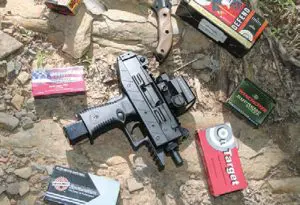
The Uzi’s blowback operating method translates into a stiff action spring. Magazine removal, replacement, and bolt manipulation must be done in a firm manner. I found it best not to rush manipulating the Uzi during reloads, to ensure that my hand did not slip off the cocking handle or not bring the action back far enough to strip a fresh round from the magazine.
The magazine well in the pistol grip means you can reload without looking. Range experience indicated that the “hand-finds-hand” method works efficiently in getting a fresh magazine inserted into the weapon’s pistol grip, especially under time pressure and wanting to keep eyes downrange during the reload. The Uzi Pro’s redesigned magazine release is more “handgun” like, making it more familiar to U.S. citizen shooters.
The Uzi Pro has placed the selector on the frame versus high on the pistol grip as with the original Uzi design. The safety selector can be operated with the dominant hand’s thumb with minimal effort. The selector switch can be left on fire, yet removing the hand from the grip provides for a safe weapon if having to sling the weapon and perform other tasks in a hurry—an important safety feature.
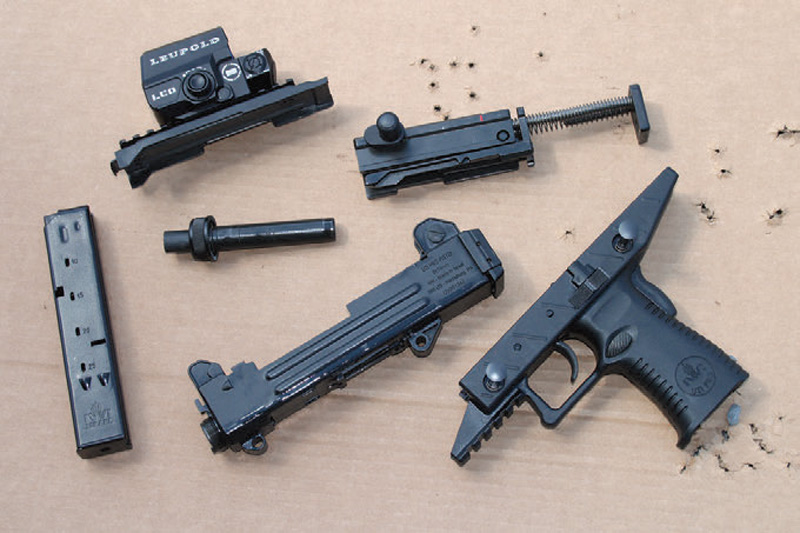
RANGE TIME
The Uzi Pro functioned flawlessly with Winchester 124-grain NATO FMJ loads, Black Hills 124-grain JHP, Winchester 147-grain JHP, Century HotShot Elite 115-grain FMJ, and On Target 115-grain FMJ. The ability to feed the JHPs was a totally unexpected bonus and a credit to the Uzi design.
While I cannot report sub-MOA groups at 100 yards with the Uzi Pro, especially considering nothing like this was attempted, accuracy was a pleasant surprise, with the six-inch plate racks struck consistently from 35 yards out, if a stable position was acquired.
As is typical of many weapon design reworks from open-bolt select-fire to closed-bolt semiautomatic, the trigger left a lot to be desired. One drill involved engaging multiple targets from different positions with mandatory magazine changes between firing positions. This serves to get a weapon heated up, and gives the shooter a sense of handling and best practice manipulation techniques.
The Uzi Pro experienced no reliability issues with hundreds of rounds fired during T&E at Echo Valley Training Center in West Virginia. The Uzi design would not have been used by agencies such as the Secret Service and over 90 countries if it did not perform better than most other available weapons.
However, I cannot make a case for the Uzi Pro pistol being a viable personal defense weapon for citizen use today. Along these same lines, I do not have to stretch the truth in saying it’s a fun pistol to shoot and handle at the range.
The Uzi Pro lineage goes back to the original select-fire Uzi SMG and conjures up a connection to the past. With a devoted group of followers, the Uzi can be considered a niche weapon here in the U.S.
Even without the automatic fire capability and wire shoulder stock, it’s easy to appreciate the handling, light recoil, accuracy, and reliability the Uzi offers to its users. The Uzi Pro pistol is an interesting piece of firearm history that IWI US is making available to American shooters.
